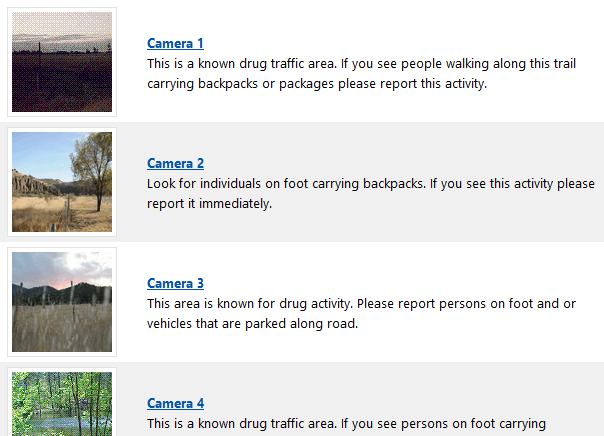Surveillance
 A screenshot of BlueServo circa 2013.
A screenshot of BlueServo circa 2013.
Though webcams created new opportunities, they were also of course used to implement surveillance systems. Because of the ease of operability and low maintenance required, many webcams replaced traditional camera systems and appeared where they might not have been before. For example, many daycares began to install systems so that parents could check in on their children from work or home. Companies began to spring up for the express purpose of installing these systems.
Unlike the traditional CCTV systems that preceded them, many of these surveillance systems connected to an open web, either deliberately or through an oversight in security. Nevertheless, surveillance systems could now be viewed publicly outside of the once closed networks strung together by coaxial cables and VCRs. While webcams created the desire to be watched, this was very much fueled by the desire to watch others, a possibility made available to everyone with these public-facing cameras. With cameras acting as our eyes, we feel a sense of displacement by having vision machines perform sight for us, removing any sense of guilt over peering in on a classroom or watching someone sleep. Though there is this displacement of guilt, this does not necessarily imply a detachment of moral responsibility, such as with nature cameras.
With even the police turning to crowdsource video surveillance by placing their networks online, individuals move to interact with the worlds they watch behind their monitors even if they are distant. In cases like that of BlueServo, a service that encouraged users to catch immigrants and drug smugglers along the US-Mexico border, the moral conscience is unmistakable. Despite how online surveillance changed the dynamics involved, state sponsored cameras continue to be unavoidable and undesirable.
« Back to index